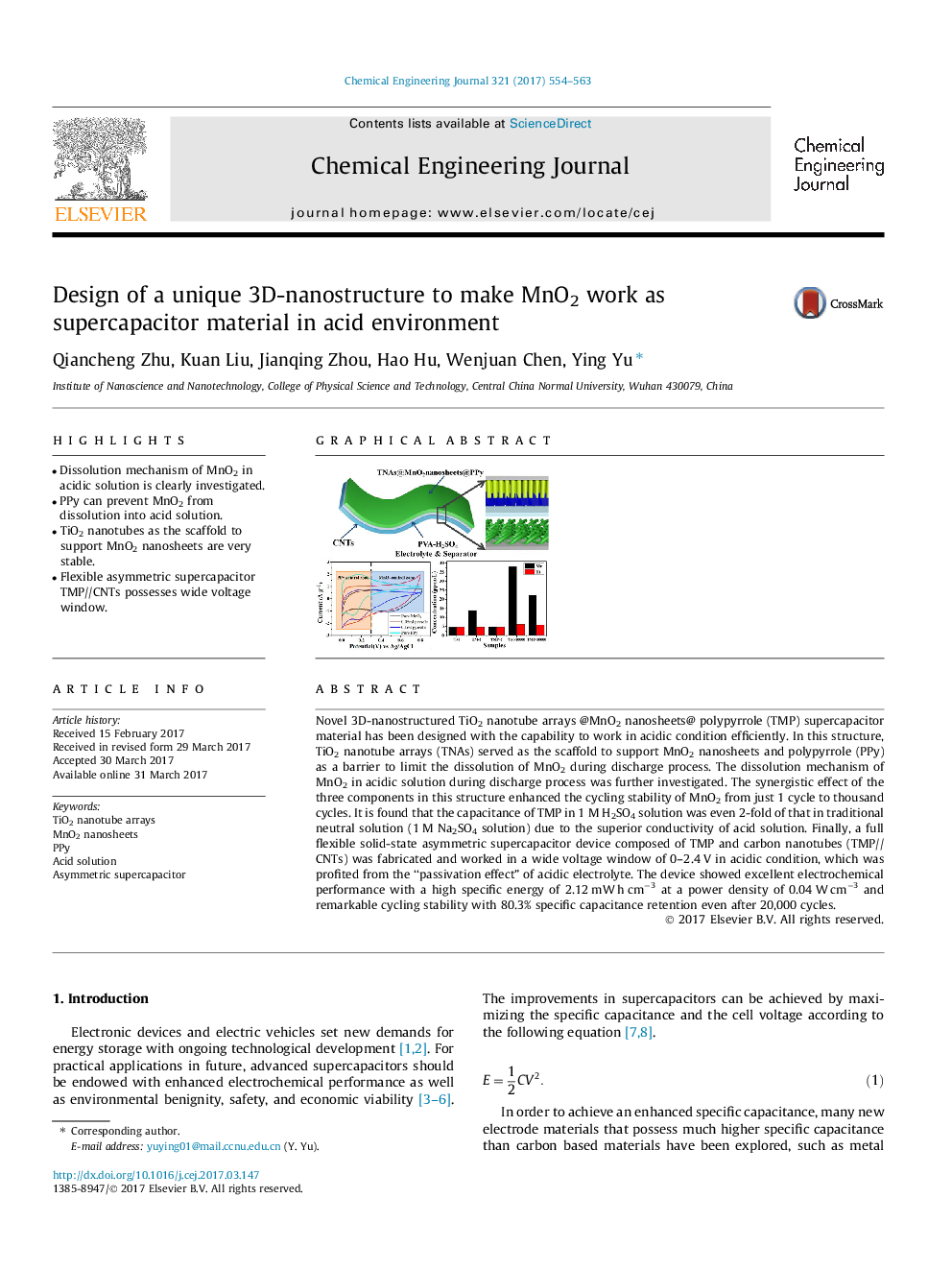| Article ID | Journal | Published Year | Pages | File Type |
|---|---|---|---|---|
| 6465904 | Chemical Engineering Journal | 2017 | 10 Pages |
â¢Dissolution mechanism of MnO2 in acidic solution is clearly investigated.â¢PPy can prevent MnO2 from dissolution into acid solution.â¢TiO2 nanotubes as the scaffold to support MnO2 nanosheets are very stable.â¢Flexible asymmetric supercapacitor TMP//CNTs possesses wide voltage window.
Novel 3D-nanostructured TiO2 nanotube arrays @MnO2 nanosheets@ polypyrrole (TMP) supercapacitor material has been designed with the capability to work in acidic condition efficiently. In this structure, TiO2 nanotube arrays (TNAs) served as the scaffold to support MnO2 nanosheets and polypyrrole (PPy) as a barrier to limit the dissolution of MnO2 during discharge process. The dissolution mechanism of MnO2 in acidic solution during discharge process was further investigated. The synergistic effect of the three components in this structure enhanced the cycling stability of MnO2 from just 1 cycle to thousand cycles. It is found that the capacitance of TMP in 1 M H2SO4 solution was even 2-fold of that in traditional neutral solution (1 M Na2SO4 solution) due to the superior conductivity of acid solution. Finally, a full flexible solid-state asymmetric supercapacitor device composed of TMP and carbon nanotubes (TMP//CNTs) was fabricated and worked in a wide voltage window of 0-2.4 V in acidic condition, which was profited from the “passivation effect” of acidic electrolyte. The device showed excellent electrochemical performance with a high specific energy of 2.12 mW h cmâ3 at a power density of 0.04 W cmâ3 and remarkable cycling stability with 80.3% specific capacitance retention even after 20,000 cycles.
Graphical abstractDownload high-res image (85KB)Download full-size image
